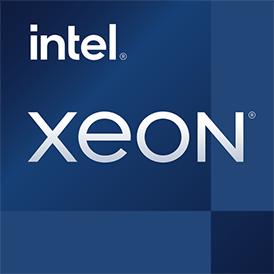 Geekbench 3, 64bit (Multi-Core)
Geekbench 3, 64bit (Multi-Core)
|
|
Intel Xeon E5-2667 v2
8C 16T @ 3.3 GHz
|
36710
|
|
|
AMD EPYC 7301
16C 32T @ 2.2 GHz
|
35367
|
 Estimated results for PassMark CPU Mark
Estimated results for PassMark CPU Mark
|
|
Intel Xeon E5-2667 v2
8C 16T @ 3.3 GHz
|
16165
|
|
|
AMD EPYC 7301
16C 32T @ 2.2 GHz
|
14998
|
 Geekbench 5, 64bit (Multi-Core)
Geekbench 5, 64bit (Multi-Core)
|
|
AMD EPYC 7301
16C 32T @ 2.2 GHz
|
8864
|
|
|
Intel Xeon E5-2667 v2
8C 16T @ 3.3 GHz
|
6428
|
 Geekbench 6 (Multi-Core)
Geekbench 6 (Multi-Core)
|
|
Intel Xeon E5-2667 v2
8C 16T @ 3.3 GHz
|
4783
|
|
|
AMD EPYC 7301
16C 32T @ 2.2 GHz
|
4428
|
 Geekbench 3, 64bit (Single-Core)
Geekbench 3, 64bit (Single-Core)
|
|
AMD EPYC 7301
16C 32T @ 2.2 GHz
|
3175
|
|
|
Intel Xeon E5-2667 v2
8C 16T @ 3.3 GHz
|
2894
|
 Cinebench R15 (Multi-Core)
Cinebench R15 (Multi-Core)
|
|
AMD EPYC 7301
16C 32T @ 2.2 GHz
|
2033
|
|
|
Intel Xeon E5-2667 v2
8C 16T @ 3.3 GHz
|
1136
|
 Geekbench 5, 64bit (Single-Core)
Geekbench 5, 64bit (Single-Core)
|
|
Intel Xeon E5-2667 v2
8C 16T @ 3.3 GHz
|
891
|
|
|
AMD EPYC 7301
16C 32T @ 2.2 GHz
|
761
|
 Geekbench 6 (Single-Core)
Geekbench 6 (Single-Core)
|
|
Intel Xeon E5-2667 v2
8C 16T @ 3.3 GHz
|
813
|
|
|
AMD EPYC 7301
16C 32T @ 2.2 GHz
|
687
|
 Cinebench R15 (Single-Core)
Cinebench R15 (Single-Core)
|
|
Intel Xeon E5-2667 v2
8C 16T @ 3.3 GHz
|
151
|
|
|
AMD EPYC 7301
16C 32T @ 2.2 GHz
|
119
|
 Cinebench R11.5, 64bit (Multi-Core)
Cinebench R11.5, 64bit (Multi-Core)
|
|
AMD EPYC 7301
16C 32T @ 2.2 GHz
|
20.6
|
|
|
Intel Xeon E5-2667 v2
8C 16T @ 3.3 GHz
|
13.0
|
 Cinebench R11.5, 64bit (Single-Core)
Cinebench R11.5, 64bit (Single-Core)
|
|
Intel Xeon E5-2667 v2
8C 16T @ 3.3 GHz
|
1.7
|
|
|
AMD EPYC 7301
16C 32T @ 2.2 GHz
|
1.5
|

